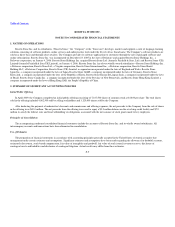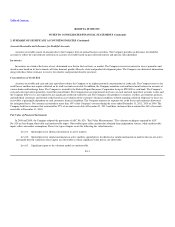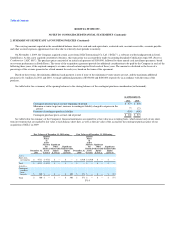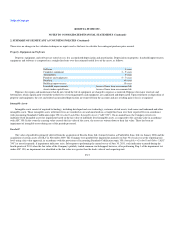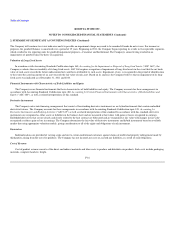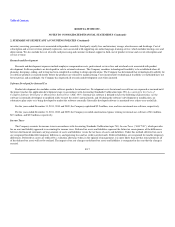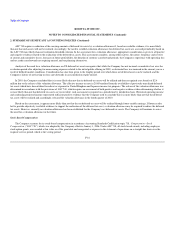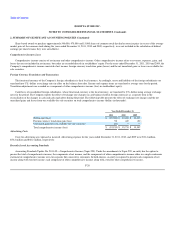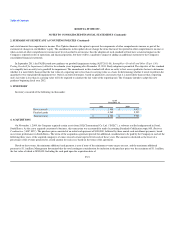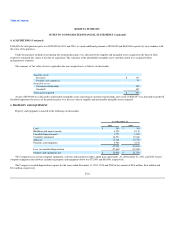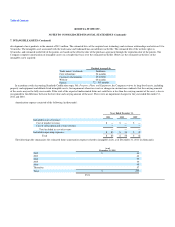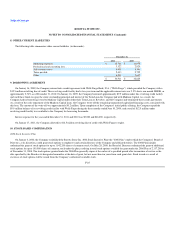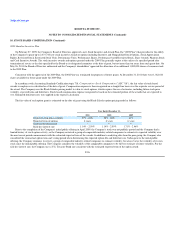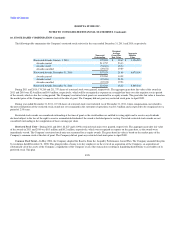Rosetta Stone 2011 Annual Report Download - page 99
Download and view the complete annual report
Please find page 99 of the 2011 Rosetta Stone annual report below. You can navigate through the pages in the report by either clicking on the pages listed below, or by using the keyword search tool below to find specific information within the annual report.
Table of Contents
ROSETTA STONE INC.
NOTES TO CONSOLIDATED FINANCIAL STATEMENTS (Continued)
2. SUMMARY OF SIGNIFICANT ACCOUNTING POLICIES (Continued)
ASC 740 requires a reduction of the carrying amounts of deferred tax assets by a valuation allowance if, based on available evidence, it is more likely
than not that such assets will not be realized. Accordingly, the need to establish valuation allowances for deferred tax assets are assessed periodically based on
the ASC 740 more-likely-than-not realization threshold criterion. In the assessment for a valuation allowance, appropriate consideration is given to all positive
and negative evidence related to the realization of the deferred tax assets. This assessment considers, among other matters, the nature, frequency and severity
of current and cumulative losses, forecasts of future profitability, the duration of statutory carryforward periods, the Company's experience with operating loss
and tax credit carryforwards not expiring unused, and tax planning alternatives.
Analysis of the need for a valuation allowance on US deferred tax assets recognizes that while the Company has not incurred a cumulative loss over the
evaluation period after adjusting for nonrecurring expenses related to the initial public offering in 2009, a substantial loss was incurred in the current year as a
result of difficult market conditions. Consideration has also been given to the lengthy period over which these net deferred assets can be realized, and the
Company's history of not having tax loss carryforwards in any jurisdiction expire unused.
In 2010, the Company concluded that it is more likely than not that its deferred tax assets will be utilized and thus recognized a tax benefit of $2.4
million due to the release of the valuation allowance. The effective income tax rate in 2010 benefited from the availability of previously unrealized deferred
tax assets which have been utilized to reduce tax expense for United Kingdom and Japanese income tax purposes. The release of the valuation allowance was
determined in accordance with the provisions of ASC 740, which requires an assessment of both positive and negative evidence when determining whether it
is more likely than not that deferred tax assets are recoverable; such assessment is required on a jurisdiction by jurisdiction basis. Historical operating income
and continuing projected income represented sufficient positive evidence that the Company used to conclude that it is more likely than not that the deferred
tax assets will be realized and accordingly, released the valuation allowance in the fourth quarter of 2010.
Based on the assessment, it appears more likely than not that the net deferred tax asset will be realized through future taxable earnings. If future results
fail to provide objectively verifiable evidence to support the realization of the deferred tax asset, a valuation allowance may be required to reduce the deferred
tax assets. However, currently no valuation allowance has been established for the Company's net deferred tax assets. The Company will continue to assess
the need for a valuation allowance in the future.
Stock-Based Compensation
The Company accounts for its stock-based compensation in accordance Accounting Standards Codification topic 718, Compensation—Stock
Compensation ("ASC 718"), which was adopted by the Company effective January 1, 2006. Under ASC 718, all stock-based awards, including employee
stock option grants, are recorded at fair value as of the grant date and recognized as expense in the statement of operations on a straight-line basis over the
requisite service period, which is the vesting period.
F-18



